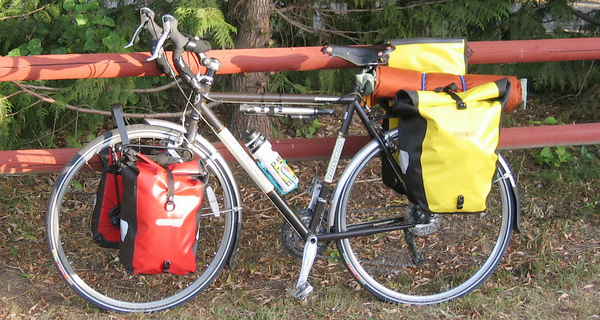 By Jesús Arias García, KNXin.
By Jesús Arias García, KNXin.
Commuting by bicycle is not easy in Cape Town. Here, car and taxi drivers are not happy to share the tarmac with you, but there are also other factors that make the ride a challenge.
If it is winter, you have to deal with cold temperatures and rain, so wearing a jacket and/or waterproof clothes, as well as waterproof panniers to carry your belongings, is the order of the day. The laptop with which I am writing this article travels an average of 600km a month in that way. But if you ride in summer, you need to deal with an even tougher enemy: high temperatures.

We are now in the middle of summer in Southern Hemisphere. As I was cycling (and sweating a lot, I must say) my mind focussed on home and building automation, Smart Cities and the rest of the family. It occurred to me that our bodies are super intelligent. We do not have temperature sensors, or at least we do not have a display that shows the absolute temperature, because we do not need to be aware of it. Furthermore, our body collects data from pretty much all of the skin’s surface, and it uses that data without us being aware of it. After collecting data, our body is able to regulate the corporal temperature by using different advance methods, like the aforementioned sweating.
As you can see, you do not need to touch any pushbutton or choose any temperature set point, since your body is ‘programmed ex-factory’. Unfortunately we are only able to process a couple of bits of information in a conscious way, while we can manage many more (resulting in hundreds of variables) subconsciously.
Information Overload
In my previous article ‘Energy and resources, keep it simple’, when talking about an automated irrigation system that was primarily designed to conserve water, I also stated the following:

‘Big data’ is an increasing problem. There are so many sources of data, that it can be a major challenge sifting the valuable information from the irrelevant ‘noise’.
This is also true in home and building automation, where we are able to gather more and more data. While some of this can be helpful, it can quite easily overload the end user and prevent them from making the right decisions.
Imitating Nature
A couple of weeks ago, a good friend of mine introduced me to C2C (Cradle to Cradle) design, the description of which, according to Wikipedia, is as follows:

I believe that we are now passing from the era of information to the era of concepts. We seem to conceptualise everything – even things that have coexisted with us for millennia.
Going back to my cycling example, sweat is a well-known mechanism for cooling. Your body releases water and minerals, and thanks to evaporation, your body cools down. Remarkably, a watermelon keeps itself reasonably cool in summer in much the same way.

Can this principle be applied to home and building automation? Well, let’s go back to the Mesopotamian culture of around 4000BCE. Earthenware uses exactly the same concept to keep water cold in summer, thanks to clay being porous.

We now have at our fingertips all of the technology required to achieve what mankind has been seeking to do for thousands of years: imitate nature. Our buildings should be autonomous, and independent from the user’s whims. I’m talking about a kind of ‘enlightened absolutism’ but in our buildings, that provides ‘everything for its occupants, but without relying on its occupants’ decisions’ (“Tout pour le peuple; rien par le peuple”).
Conclusion
Rather than fighting nature, our buildings should be designed to work with nature and imitate natural processes. Where possible, data should be taken out of the hands of the user and instead be processed by intelligent systems that can take the right decisions.
I have noticed that green building certifications such as LEED or BREEAM, as well construction techniques such as PASSIVHAUS, promote the use of passive design to imitate nature. But now, in 2014, KNX allows us to imitate nature in an active way. We can improve ventilation, cooling and heating, lighting and shading by using automation. Buildings need to be alive and need to combine both passive and active solutions in order to achieve excellence in energy generation, energy conservation and energy management.
It seems that commuting by bicycle, even in the baking summer sun, has its advantages: from perspiration comes inspiration!
Jesús Arias García is a freelance Engineering Consultant for KNXin, a consultant engineering firm specialising in KNX technology and green buildings. His co-authored book ‘KNX for LEED‘ is available through the KNX Online Shop.












